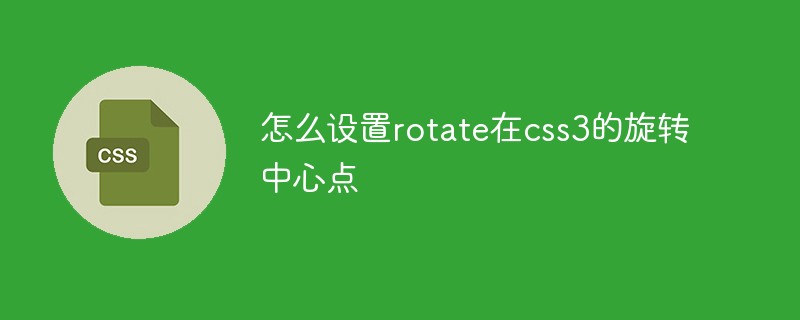Architecture CSS
Under the premise that current browsers generally support it, CSS has been given an unprecedented mission. However, the more you rely on CSS, the larger and more complex the style sheet file will become. Along with this comes the challenge of file maintenance and organization.
(Once upon a time) only one css file was enough - all the rules were gathered together, and it was easy to add, delete or modify them - but these days are long gone. When building a new website (now), you have to spend some time planning how to organize and structure the CSS.
Organization of files
The first step in building a CSS system is the formulation of an outline. (I think) the importance of CSS organization planning is comparable to the website directory structure. (htmlor note: use exaggerated words to enhance your memory) There is no one-size-fits-all solution, so we will discuss some basic organizational solutions and their respective pros and cons.
Main css file
Usually you can use a main css file to place the rules shared by all pages. This file will contain default fonts, links, headers, and other styles. With the main css file in place, we started exploring high-level organizational strategies.
Method 1: Based on prototype
The most basic strategy is to separate css files based on archetype page. If a website's homepage, subpages, and portfolio pages are designed differently, a prototype-based strategy can be used. (Under this strategy) Each page will have its own css file.
When the number of prototypes is not large, this method is simple, clear and effective. However, problems arise when page elements are not located in each prototype page step by step. If the subpages and the combination page share some elements, but the homepage does not, what should we do?
Put the shared elements into the main css file. This isn't the purest solution, but it works for some specific situations. But if the site is huge, the main css file will quickly bloat - which defeats the purpose of separating files: to avoid importing unnecessarily large files.
Put a copy of the style code in the css files of the combination page and sub-page. (Doing this) means maintaining redundant code, and obviously we don't want that.
Create a new file to be shared by these two pages. sounds great. But if there are only 10 lines of code, do we create this file just to share these 10 lines of code? (htmlor note: Killing a chicken with a knife?) This method is very pure, but if the website is huge and there are many pages sharing a small number of elements ( htmlor note: For example, if 30 pairs of pages each share 10 lines of code), it will appear very cumbersome.
Create a separate css file containing styles for all shared elements. This method may be simpler, but it depends on the size of the site and the number of shared elements. There is a very annoying situation: a large css file is imported, but only a small part of the style is used on the page - again, this defeats the original purpose of separating files.
This is what I call the overlap dilemma. There's a lot of overlap in fragmented CSS rules, and there's no completely clear-cut way to organize them.
Method 2: Based on page elements/blocks
If the website uses server-side include, this method will be very good. For example, if you use header include, it will have its own corresponding css file. The include in the footer or other parts can be done in the same way, just import your own css file. This method is simple and clean, but it may produce a lot of small css files.
For example, if the footer style only requires 20 lines of CSS code, it is not worthwhile to create a separate file. And this method will cause each page to contain a bunch of css files - because there are as many css files as there are include.
Method 3: Based on tags
This solution is intuitive and practical, similar to the previous one. If the website has a total of 30 pages, 10 of which contain forms, then you can create a css file to specifically handle the style of the form, and import it only on these 10 pages. If the other 10 pages contain tables, create a file specifically to handle table styles...and so on.
Additional Organization Tips
In addition to subjective methods of organizing documents, we also need to consider multiple media types such as print, handheld devices, and screens. Although this is clearly defined, it is still a factor that should be considered when establishing the file structure. Once multiple media types must be supported, some rules in the main CSS file may need to be reconsidered.
In addition, brand co-operation may also be an important factor. (htmlor note: such as joga jointly launched by Google and Nike) If it involves brand co-branding, you have to consider which elements should be adjusted to suit the other brand. For example, use different css files respectively.
Another often-overlooked tip: use nested @import statements. A css file can be created by just containing a series of @import statements, or adding a few css rules. This method can completely create the main css file of the website (use @import to import the style files of each part). If each page of your website imports 4 or 5 different css files, you should undoubtedly consider using this technique.
Organization of rules and selectors
After talking about file organization, let’s discuss how to organize the things in the file. Naturally, we want to browse unimpeded in the file and quickly find the selector or rule to be edited.
Redundancy vs. Dependency
As Dave Shea said in his article "Redundancy vs. Dependency", you must constantly understand the cascade. You have to decide whether to group selectors (meaning dependency) or separate them (meaning redundancy). Grouping can keep code concise and concise, but it will establish dependency relationships, resulting in increased maintenance overhead. Without grouping, you increase file size and make it difficult to keep similar selectors consistent. Only by making these trade-offs and trade-offs can we make the right decision every time.
 css ul标签怎么去掉圆点Apr 25, 2022 pm 05:55 PM
css ul标签怎么去掉圆点Apr 25, 2022 pm 05:55 PM在css中,可用list-style-type属性来去掉ul的圆点标记,语法为“ul{list-style-type:none}”;list-style-type属性可设置列表项标记的类型,当值为“none”可不定义标记,也可去除已有标记。
 css与xml的区别是什么Apr 24, 2022 am 11:21 AM
css与xml的区别是什么Apr 24, 2022 am 11:21 AM区别是:css是层叠样式表单,是将样式信息与网页内容分离的一种标记语言,主要用来设计网页的样式,还可以对网页各元素进行格式化;xml是可扩展标记语言,是一种数据存储语言,用于使用简单的标记描述数据,将文档分成许多部件并对这些部件加以标识。
 css3怎么实现鼠标隐藏效果Apr 27, 2022 pm 05:20 PM
css3怎么实现鼠标隐藏效果Apr 27, 2022 pm 05:20 PM在css中,可以利用cursor属性实现鼠标隐藏效果,该属性用于定义鼠标指针放在一个元素边界范围内时所用的光标形状,当属性值设置为none时,就可以实现鼠标隐藏效果,语法为“元素{cursor:none}”。
 css怎么实现英文小写转为大写Apr 25, 2022 pm 06:35 PM
css怎么实现英文小写转为大写Apr 25, 2022 pm 06:35 PM转换方法:1、给英文元素添加“text-transform: uppercase;”样式,可将所有的英文字母都变成大写;2、给英文元素添加“text-transform:capitalize;”样式,可将英文文本中每个单词的首字母变为大写。
 rtl在css是什么意思Apr 24, 2022 am 11:07 AM
rtl在css是什么意思Apr 24, 2022 am 11:07 AM在css中,rtl是“right-to-left”的缩写,是从右往左的意思,指的是内联内容从右往左依次排布,是direction属性的一个属性值;该属性规定了文本的方向和书写方向,语法为“元素{direction:rtl}”。
 css怎么设置i不是斜体Apr 20, 2022 am 10:36 AM
css怎么设置i不是斜体Apr 20, 2022 am 10:36 AM在css中,可以利用“font-style”属性设置i元素不是斜体样式,该属性用于指定文本的字体样式,当属性值设置为“normal”时,会显示元素的标准字体样式,语法为“i元素{font-style:normal}”。
 怎么设置rotate在css3的旋转中心点Apr 24, 2022 am 10:50 AM
怎么设置rotate在css3的旋转中心点Apr 24, 2022 am 10:50 AM在css3中,可以用“transform-origin”属性设置rotate的旋转中心点,该属性可更改转换元素的位置,第一个参数设置x轴的旋转位置,第二个参数设置y轴旋转位置,语法为“transform-origin:x轴位置 y轴位置”。


Hot AI Tools

Undresser.AI Undress
AI-powered app for creating realistic nude photos

AI Clothes Remover
Online AI tool for removing clothes from photos.

Undress AI Tool
Undress images for free

Clothoff.io
AI clothes remover

AI Hentai Generator
Generate AI Hentai for free.

Hot Article

Hot Tools

SAP NetWeaver Server Adapter for Eclipse
Integrate Eclipse with SAP NetWeaver application server.

Dreamweaver Mac version
Visual web development tools

ZendStudio 13.5.1 Mac
Powerful PHP integrated development environment

Atom editor mac version download
The most popular open source editor

SublimeText3 Linux new version
SublimeText3 Linux latest version







